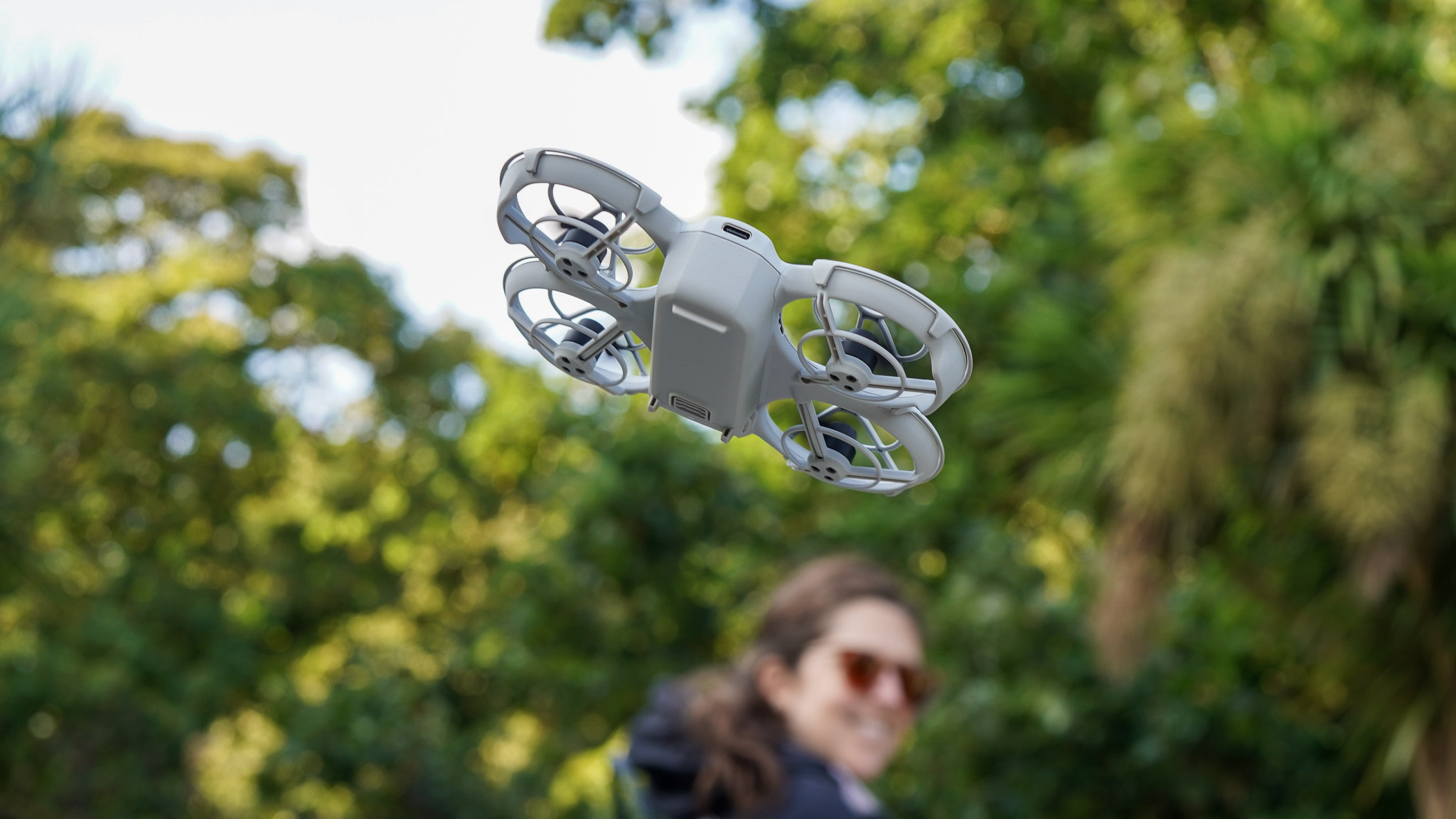
The DJI Neo is a unique drone in DJI’s lineup for several reasons. It’s more affordable than most models, easier to control for beginners, and has an excellent camera and stabilisation. It can also take off and land in areas where standard drones can’t, which is a real bonus.
I found myself in an interesting situation when testing and reviewing the DJI Neo. In most cases, I compare the drones I test to DJI models; after all, DJI is the best drone company. However, on this occasion, I looked at another drone, the excellent Zero Zero HoverAir X1, for reference.
The two drones are similar in terms of functionality, ease of use, weight, and so on. They aren’t identical, though, and this review certainly won’t be a comparison article for DJI Neo vs HoverAir X1. Instead, I’ll try to focus on the benefits and the drawbacks of the Neo while also considering the broader drone market.
On that note, how good is the DJI Neo, and does it belong in T3’s best beginner drone roundup? What are the standout features? Should you buy one? Find the answers to these questions and more below.
DJI Neo review
Price and availability
The DJI Neo was announced in September 2024 and is now available to order directly from DJI and authorised retail partners for a recommended price of £169/ $199/ AU$299 for the standalone combo. The Fly More Combo, which includes the RC-N3 Controller and the new Two-Way Charging Hub, retails for £299/ $289/ AU$539.
Specifications
- Dimensions (L×W×H): 130 x 157 x 48.5 mm
- Weight: 135 grams
- Battery life (flight time): approx. 18 mins (approx. 17 mins with the Propeller Guards)
- Range: 7 km
- Max Wind Speed Resistance: 8 m/s (Level 4)
- Built-in GPS: yes, GLONASS + GPS + Galileo + BeiDou
- Internal storage: yes, 22 GB
- Sensor: 1/2-inch image sensor
- FOV: 117.6 degrees
- Max photo resolution: 12MP
- Max video resolution: 4K (3840×2160), 16:9, 30fps (EIS on)
- Image stabilisation: Single-axis mechanical gimbal (tilt) supports RockSteady and HorizonBalancing
- Connectivity: WiFi
Design and build quality
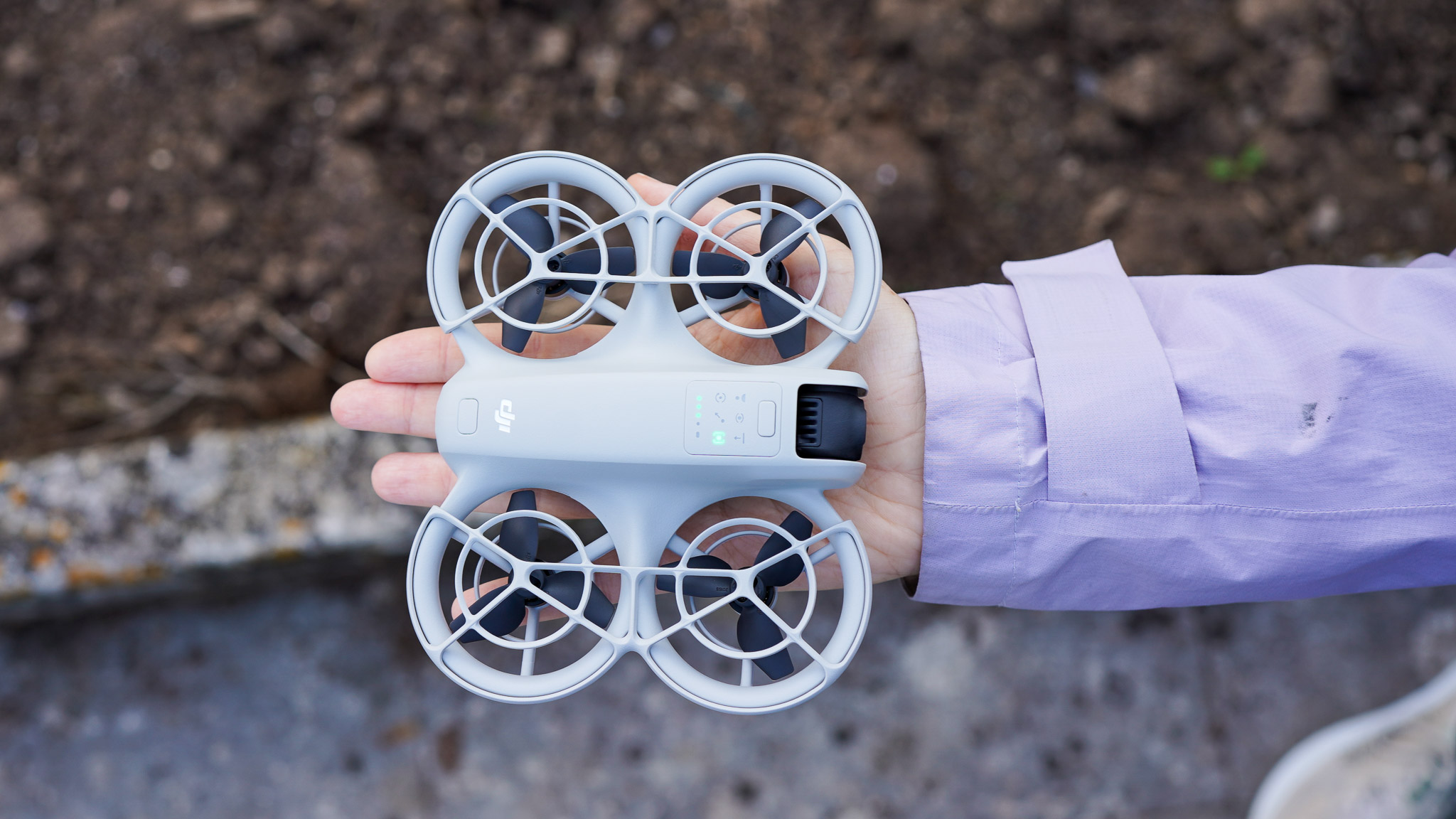
The DJI Neo is a lightweight, compact drone. It’s not your average sub-250g UAV; in fact, it’s way lighter than the otherwise featherlight DJI Mini 4 Pro. The Neo comes in at 135g, practically half the weight of the Mini 4 Pro.
It’s also petite in terms of physical dimensions, measuring 130 x 157 x 48.5 mm, giving it an almost square-like look when observed from above (or below). The Neo isn’t foldable like the HoverAir X1, but it’s pretty portable nevertheless.
The Neo looks somewhat akin to a toy drone with its propeller guard and compact build. This image is further enhanced by the fact that the drone fits nicely into my hand when my palm is stretched out.
The propeller guards can be removed, although I wouldn’t recommend it for two reasons. One, it only adds one extra minute of flight time (18 minutes without the guards and 17 minutes with), and two, the drone flies on its own and can end up in tricky situations where the propeller guard can be very beneficial. More on this below.
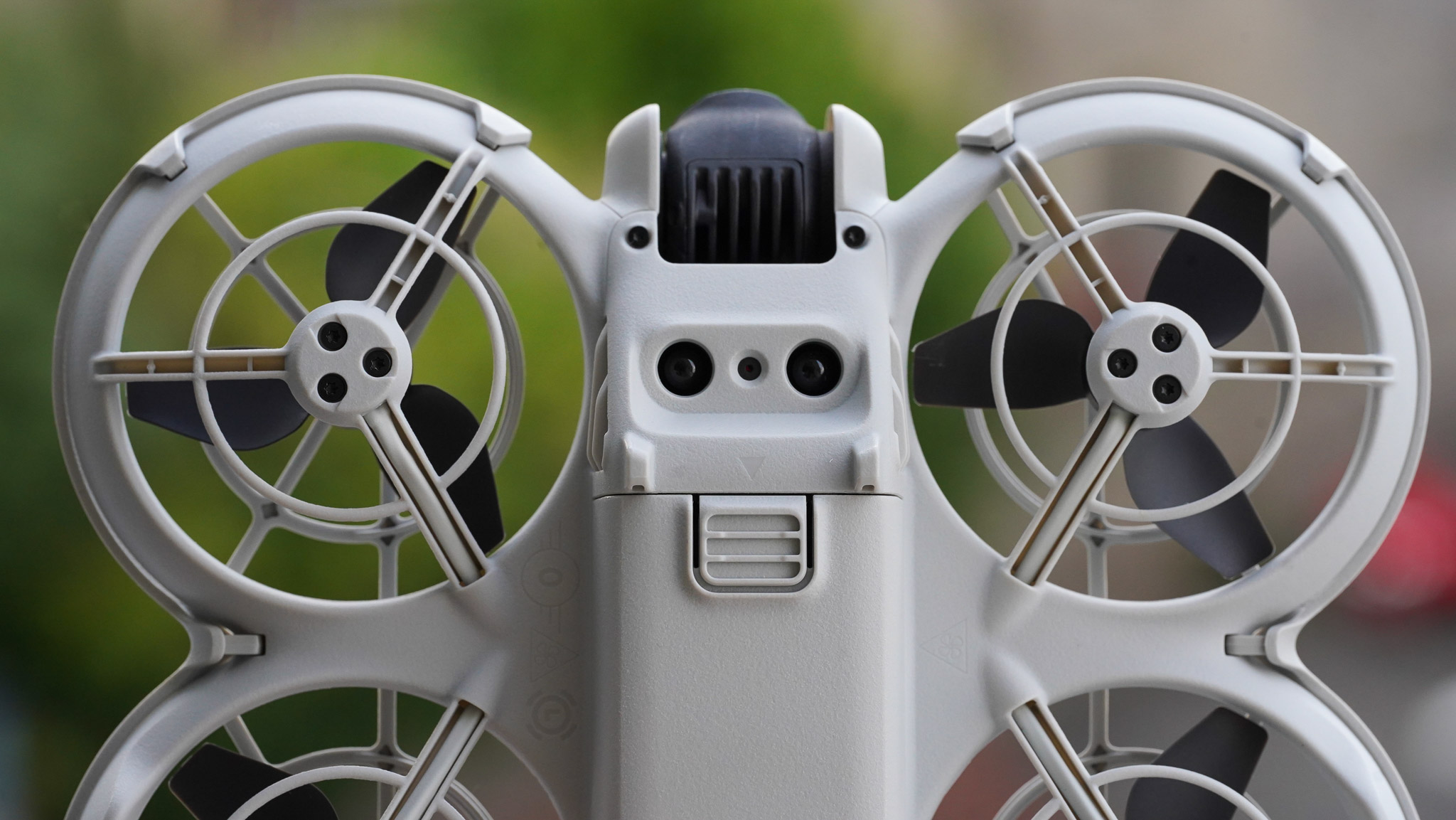
The DJI Neo is equipped with two downward-facing cameras, which help the tiny drone take off and land without GPS. The cameras also help the drone hover more stably indoors or in environments where a GPS signal is more challenging to acquire. Despite its small size, the DJI Neo has an up to 8 m/s (Level 4) wind resistance rating.
Unlike most drones, the Neo doesn’t have a microSD card slot. Instead, it has 22GB of internal memory to store videos and photos, which further reinforces the drone's beginner-friendly nature.
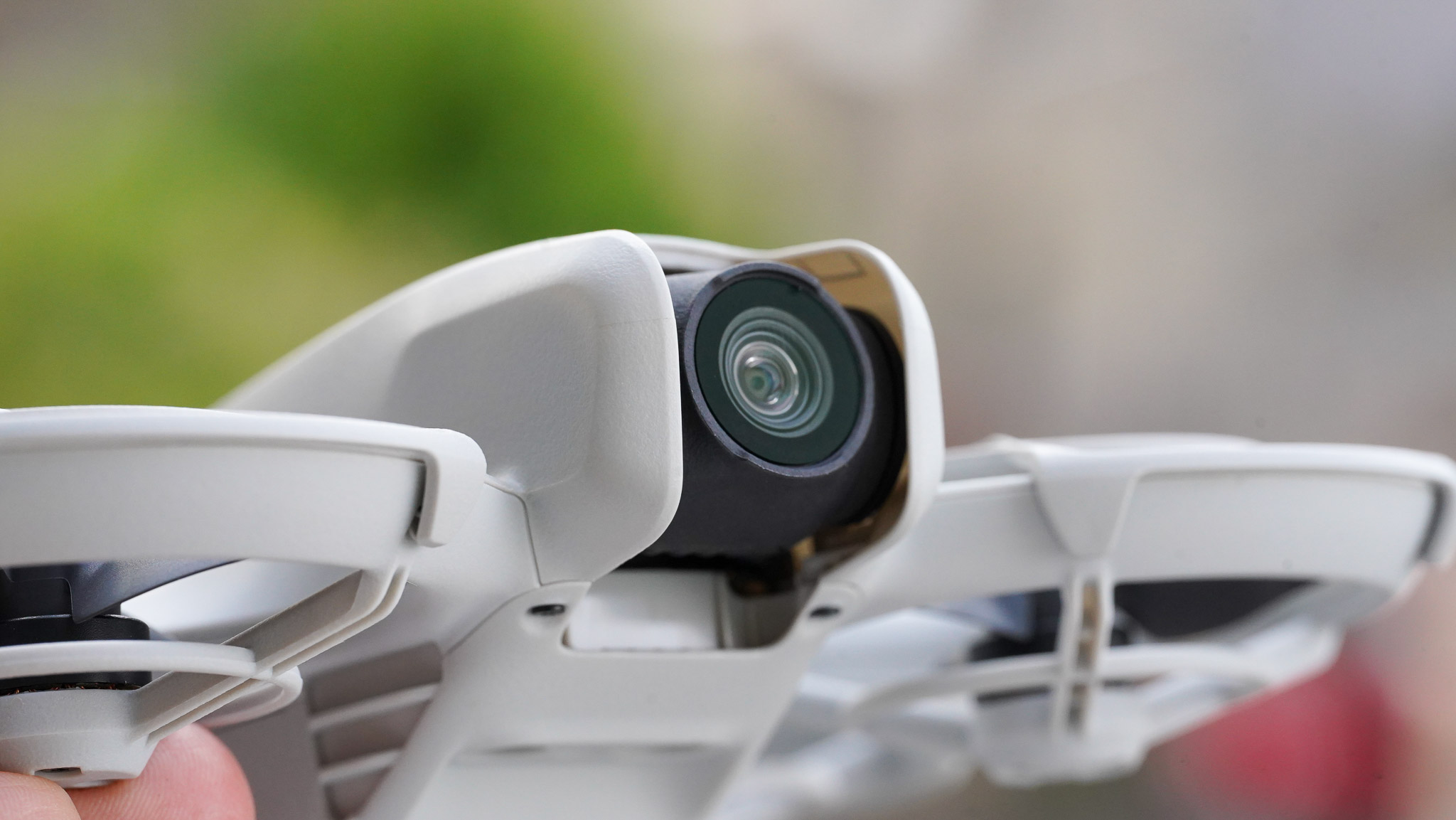
The camera at the front of the Neo has a wide, 117.6-degree field of view and offers a maximum video resolution of 4K (3840×2160) @ 30 frames per second. The maximum photo resolution is 12MP. The sensor in the Neo isn’t huge, only half an inch, but the images and videos look excellent (see also: camera performance section).
There are a couple of buttons at the top of the drone. The one at the rear turns the drone on and off, while the other helps you choose between the different modes and fly the Neo without a controller. The drone is equipped with a speaker and can provide audible feedback about which mode it’s in.
Flight performance
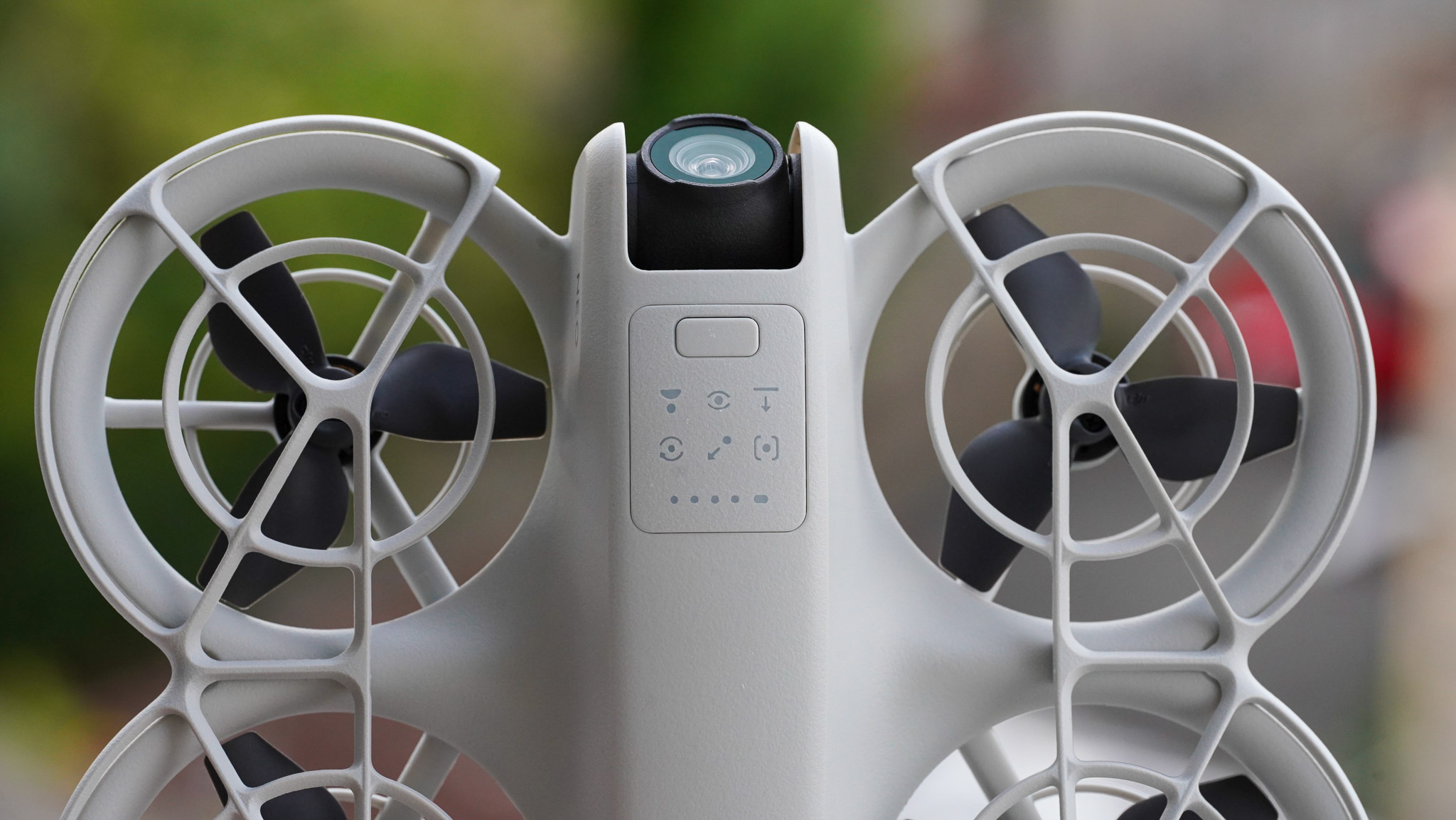
The DJI Neo has multiple control modes, one of the most exciting of which is the autonomous mode, which doesn’t require a controller. Different pre-programmed flying patterns aren’t new to DJI or drones, but not having to use a controller or app is.
The Neo has six pre-programmed flight modes: Follow, Dronie, Circle, Rocket, Spotlight and Helix. You can summon these using the button at the top, and once in position, the Neo will perform the task automatically.
The new thing about the modes is that you don’t require the app, just the drone, to execute them. You place the drone on your hand, set the desired mode, and press the button again for roughly two seconds.
The Neo will have to see a face to take off, so the best to start the process is to hold out your hand in front of you with the drone facing back at you. Once in the air, the Neo will do what it needs to do before returning to its starting position.
Landing is equally easy. Hold your hand under the drone, and it will land on your palm. You can force land the drone this way even if it was started using the app.
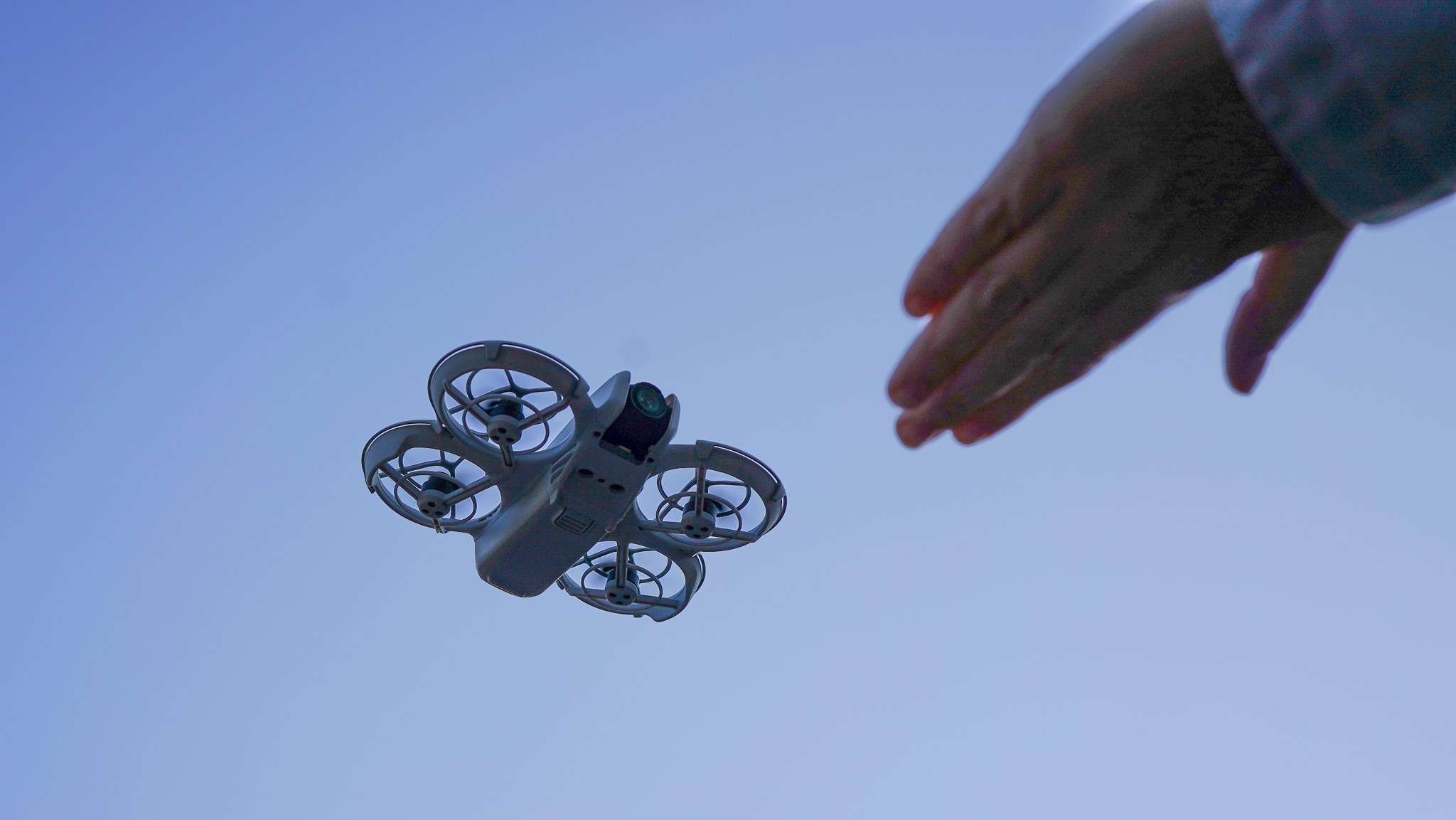
If you choose the Follow mode, the Neo will follow you around a 4-metre distance. The following speed isn’t fast, but it should be able to keep up with you if you’re jogging. I tried sprinting away from it, but the Neo got massively confused, so I don’t recommend fast movements.
One small caveat is that the Neo can’t move away from you in Follow mode, which means that it’ll most likely see you from behind in most cases. It’s understandable; if it moved away from you, you wouldn’t be able to make it land without a controller, as it would just keep backing away from your hand.
One solution would be an algorithm that recognises hand gestures. Insta360’s cameras, such as the Insta360 Ace Pro and the Insta360 X4, recognise different hand gestures, like holding out your hand like this: ✋. Something similar would work perfectly here, letting the drone know you want it to stop backing away from you.

The DJI Neo performs the pre-programmed flight patterns relatively slowly, probably for the best, as you don’t want the drone to move fast without anyone controlling it. The Neo can fly pretty fast, though, up to 16 m/s, when in manual mode.
I wouldn’t recommend not taking your smartphone with you when flying the Neo. I pushed the drone to its limits when testing and managed to confuse the Neo a couple of times, which meant I had to use the app to help it land.
One of these was when I sprinted away from it in Follow mode. Not knowing what to do, the Neo ascended to a height of around 4 metres, making it impossible for me to force-land it by holding out my hand.
One thing is for sure: the autonomous, controller-free modes make it much easier for beginners to get on board with the DJI experience. The relative slowness of the Neo’s movement might be another positive in the books of those not accustomed to drone piloting.
Camera performance
The DJI Neo sports a 4K camera, and thankfully, it’s not one of those 4K cameras on cheaper drones that look truly awful. Images and videos look detailed and sharp, with some post-processing applied by the app.
The ½-inch sensor seems to be able to cope well with the information load, although I don’t think it’s a replacement for big-boy drones such as the DJI Mavic 3 Classic. It’s not really a fair comparison, though, as the Mavic 3 Classic costs seven times as much as the Neo.
From what I can tell, there isn’t a way to adjust the video/photo settings or edit the footage in the DJI Fly app. You can use LightCut to edit them in post, but you can’t change the settings the same way you can in DJI prosumer drones.
That said, the videos look spot on, albeit a bit sharp, which might not suit all use scenarios. However, this level of detail and tuning will suffice for beginner pilots. Well, it will be more than sufficient; let’s just leave it at that.
Image stabilisation is excellent, even though the camera is ‘only’ stabilised in two ways. I tried the Neo in some seriously windy conditions, and even though the lightweight drone struggled on occasions to stay still, the videos looked decent and were not shaky at all.
Battery life
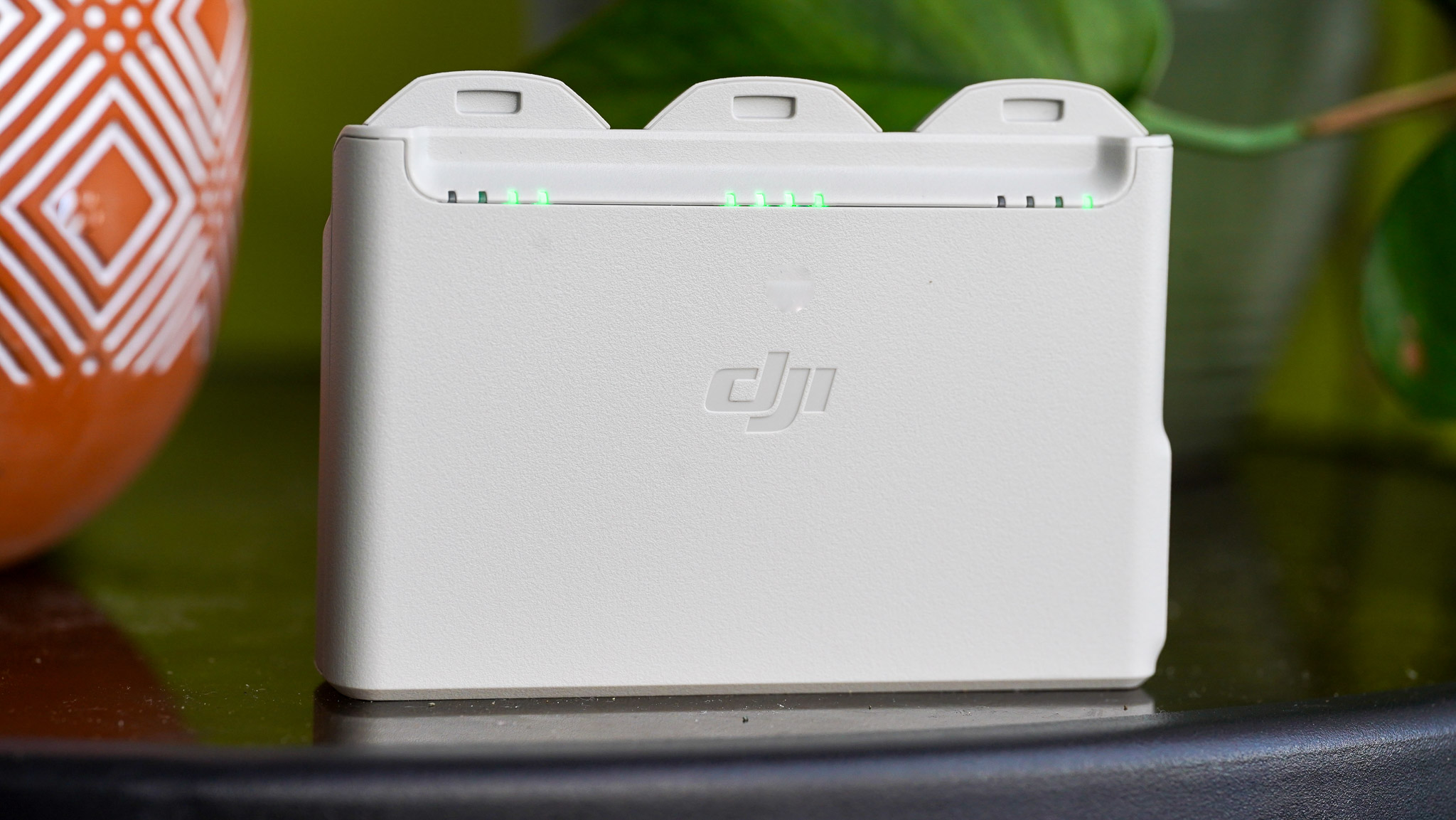
The official battery (flight time) life of the DJI Neo with the propeller guards on is around 17 minutes. I had the Fly More combo, which includes a Two-Way Charging Hub and two extra batteries, which I highly recommend getting.
The charging hub is the first of its kind from DJI, allowing you to charge three batteries simultaneously. You will need a mains connection, though, as the charger doesn’t have its own battery. You can charge the battery in the DJI Neo, as the drone’s rear has a USB-C connector.
It takes roughly an hour to charge three batteries simultaneously from 0% to 100% with the Two-Way Charging Hub (60W max charging power) and around 50 minutes when directly charging the aircraft body (15W max charging power). Yet another reason to get the Fly More Combo!
Who is the DJI Neo for?
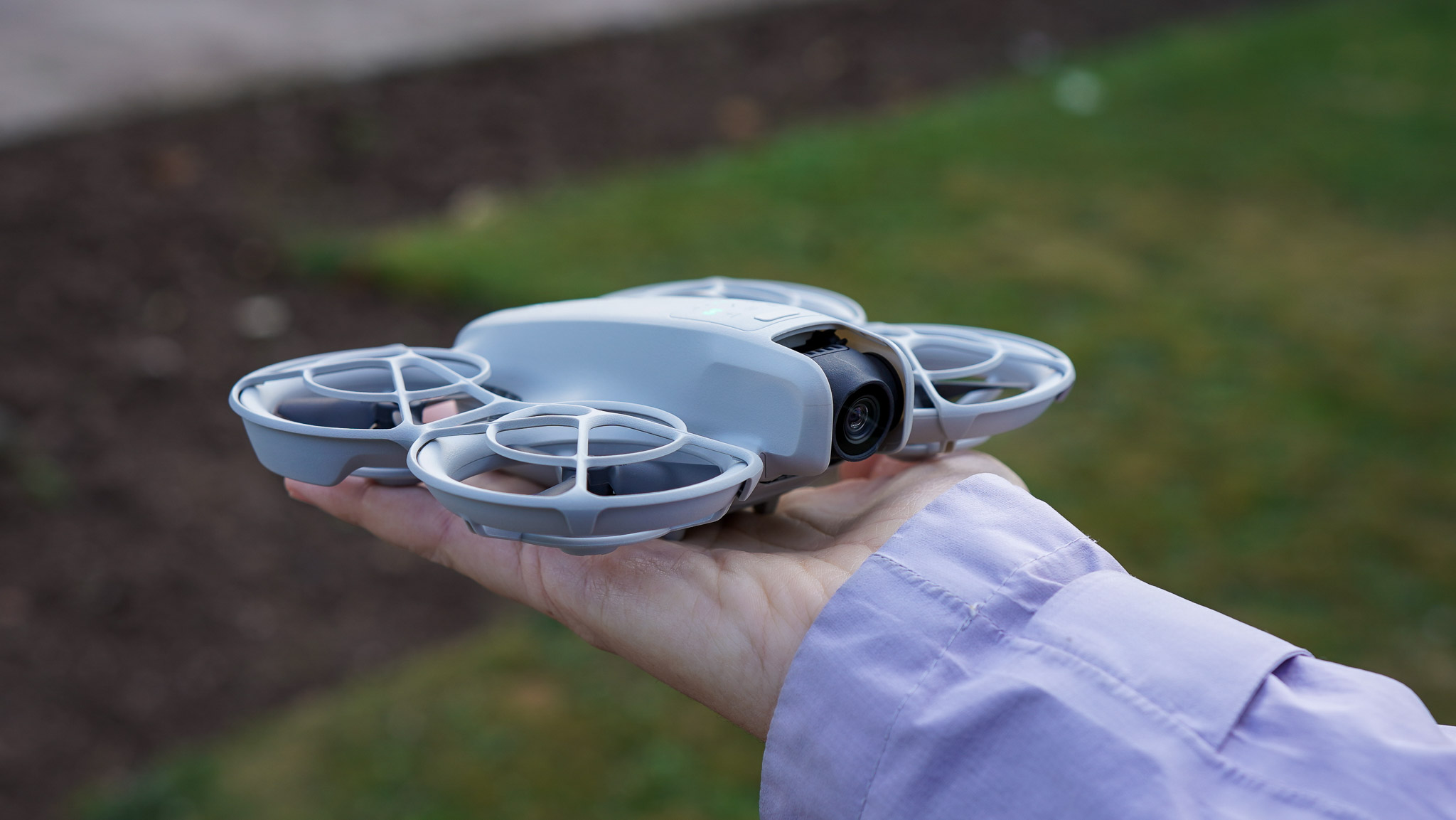
The DJI Neo is best suited for beginner pilots and content creators who might be uncomfortable using more advanced drones to shoot videos and photos. Due to the footage's self-centred nature, the Neo is best used for video shoots in nature, hiking, trekking, or ‘Gram-worthy follow shots through cities and buildings (where drone flying is permitted).
Should you buy the DJI Neo?
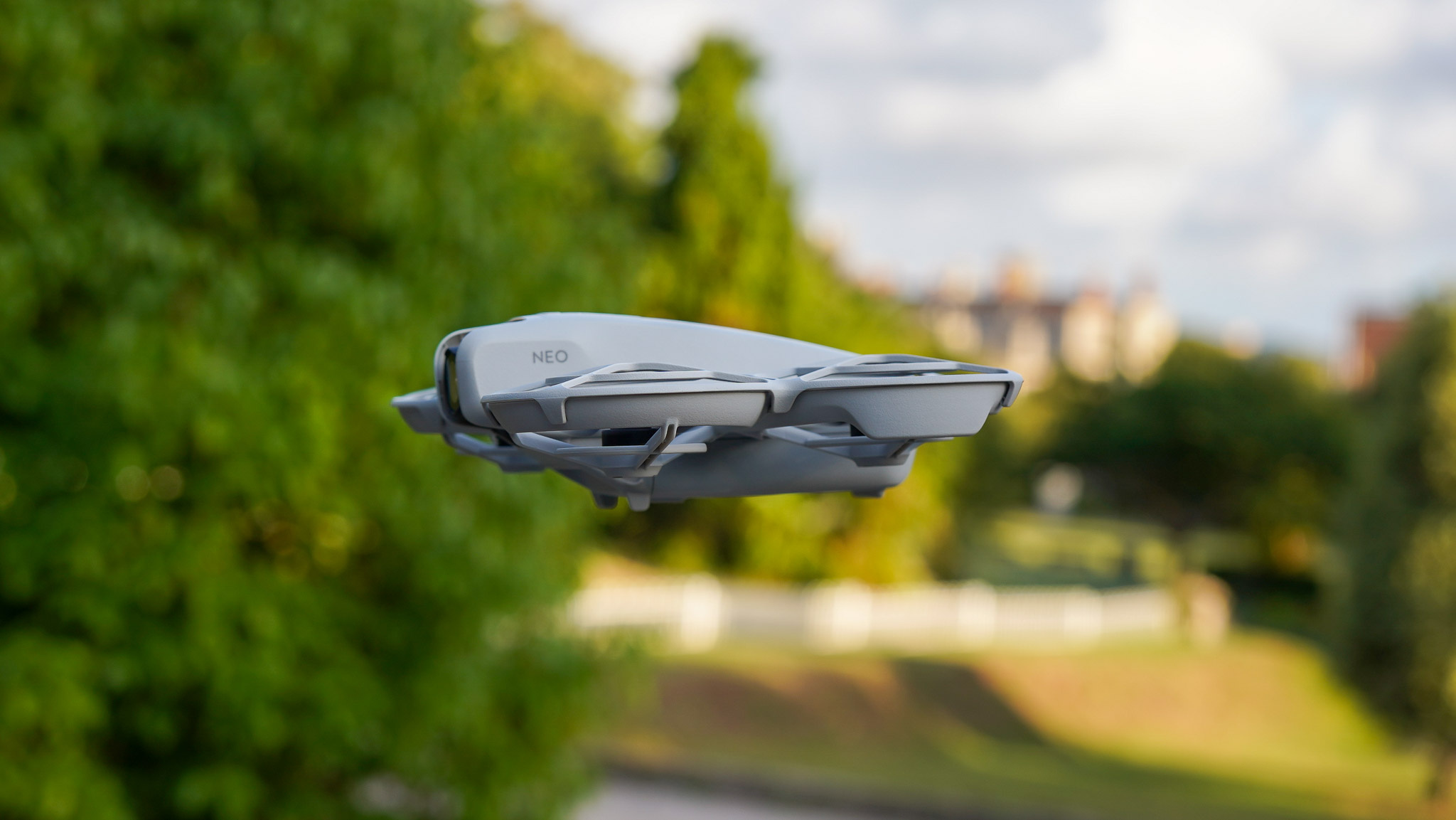
Considering the low asking price, it’s hard, if not impossible, not to recommend the DJI Neo. It has an impeccable camera and lots of autonomous shooting modes; it can be used without the app and is just a fun gadget. It’s so affordable that it even makes a great gift idea for the content creators in your life.
Verdict
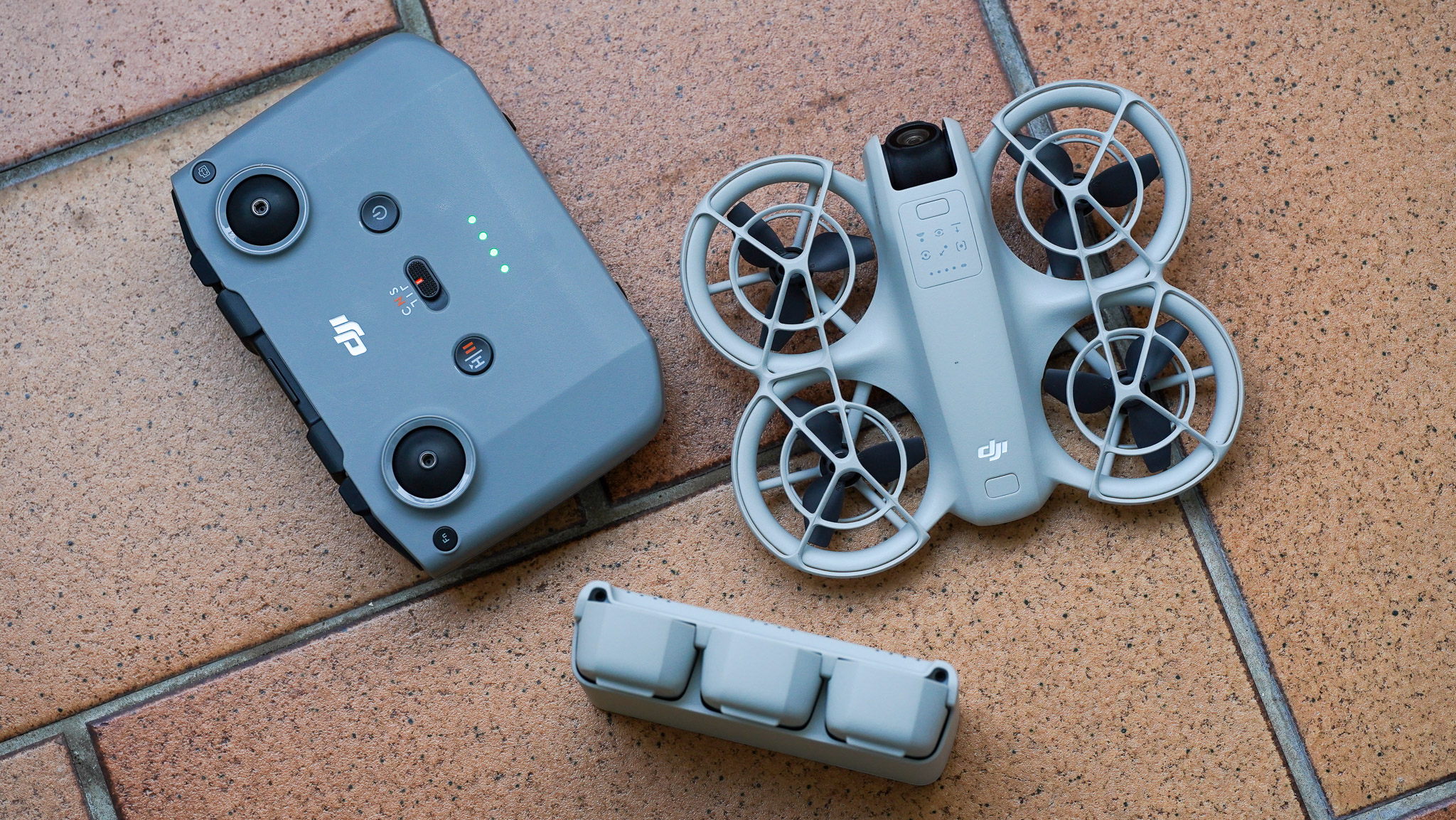
The DJI Neo is like the Goldilocks of drones – just right for beginners, content creators, and anyone with a deep-rooted fear of high-tech gizmos. It’s lightweight enough to rival a paper aeroplane yet packed with features that make it smarter than your average flying toy.
Its autonomous flight modes mean you can finally pretend to be a Jedi, commanding your drone with the power of your palm, minus the lightsaber. Sure, it’s no Mavic 3, but for a price that won’t leave you eating ramen for months, the Neo is a fun, affordable introduction to the world of drone wizardry.
The only real downside? It’ll follow you dutifully – unless you sprint, in which case, you’ve just outwitted a tiny flying robot. A+ for effort, Neo, C- for speed.
Also consider
Zero Zero HoverAir X1: Its foldable design makes it ultra-portable, ideal for travellers or those needing a compact, easy-to-carry drone.
DJI Mini 4 Pro: Offers more advanced camera options and longer flight time, perfect for those ready to invest in higher-quality content creation.
Ryze Tello: A budget-friendly option that’s great for beginners or hobbyists looking to practice basic flying skills without breaking the bank.
Autel Robotics EVO Nano: Equipped with obstacle avoidance and a superior camera, making it a great alternative for those seeking pro-level features in a compact form.







